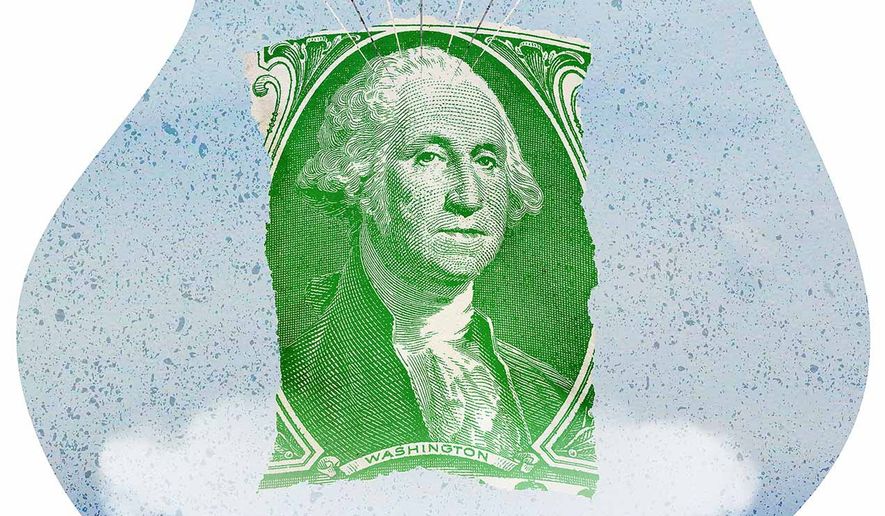OPINION:
Federal Reserve Chair Powell now recognizes accomplishing a soft landing will be difficult, but a lot will depend on Americans’ tolerance for inflation above 2%.
The Fed was late to the party raising interest rates, but investors and markets were not. The central bank began raising rates in March, but mortgage rates began moving up in January in anticipation of a tightening cycle.
New and existing home sales — as measured in units sold, not prices — began trailing down in February and ultimately pushed down lumber prices, a bellwether for building materials generally.
The bottom won’t fall from under home prices because the pandemic depressed new home construction. The stock of available housing, and both owner-occupied and rental units, will remain scarce.
Good housing price data is published with a considerable lag. We are likely to see moderation from 20% annual increases in sale prices but not a panic. Rents are jumping at double-digit rates.
As important, while many economists may have lambasted the Fed for not acting sooner, it has not lost public confidence in its will and capacity to tame inflation. Depending on the measure, inflation expectations appear to be peaking or declining.
Ordinary Americans may be worried about a recession, but businesses continue to add employees at a decent pace and more adults are reentering the labor force. Wages continue to rise, and the annualized pace over the last three months has been about 6%.
Facing labor shortages, businesses are installing more robots, and productivity growth should recover. Those will permit businesses to pay somewhat higher wages and keep labor-induced price increases somewhat lower.
It should be a long time before the Fed raising rates or running down its balance sheet impacts on consumer spending.
Households are saving less to cope with inflation, but they are still saving money and adding to their balance sheets — $815 billion in May.
Overall, thanks to banked stimulus checks and other pandemic aid, households and nonprofits have more than $3 trillion in checking and savings deposits than they had before COVID.
Granted, this cushion is unevenly spread.
Working families getting along below the median household income feel higher gas and grocery prices more acutely. Mass retailers like Walmart and consumer goods companies like Proctor and Gamble are getting pushback, but luxury retailers are taking big price increases.
Consumers are pivoting to travel and events, while concert tickets, airfares and hotel rates are jumping. Macy’s may have an inventory glut, but planes are full as airlines scramble to find pilots.
Flagging consumer spending is not going to tank this economy. But as this column previously argued, the real and persistent inflationary pressures are on the supply side of the global economy beyond Mr. Powell’s control, and inflation should settle at or somewhat above 4%.
The three most critical areas are basic agricultural commodities, oil and gas and computer chips.
The war in Ukraine is grinding to a stalemate, but it’s important to remember that food and energy prices tend to overcompensate in the short run.
Russian President Vladimir Putin can only cut off Ukrainian grain and oilseed exports through the Black Sea once. Near term, finding other ways to get the grain out is expensive and incomplete but over time things should loosen up.
Similarly, oil markets are going through a grand adjustment. Russia will sell more petroleum in Asia, and Europeans will develop alternative sources of natural gas.
Food and energy prices will continue to rise but in 2023, the pace should moderate somewhat.
The real question concerning a soft landing becomes: Does the Fed stick to its 2% inflation target as the pace of price increases slows but remains stubbornly above that target?
Real interest rates and politics become critical. If the Fed, as currently expected, raises the federal funds rate by half or three-quarters a point in July and then more moderately at subsequent meetings, the key policy rate would still be below the current rate of inflation and pace of wage growth.
If car sales lag, it will be due to the continued shortage of chips, and home buyers will recognize that higher mortgage rates are not so onerous when measured against long-term inflation and wage growth of 4% or 5%.
In 2023, the Fed will be looking past the midterm elections to the prospect of former President Donald Trump running again and perhaps recapturing the White House. Given the fondness, Mr. Powell surely remembers Mr. Trump’s badgering, and he will be reluctant to push the economy into a recession to get inflation down to 2%.
Former Fed Chair Paul Volcker only got inflation down to about 4%.
Next winter, Mr. Powell may well declare victory with inflation headed down to 4% and take his foot off the brakes.
• Peter Morici is an economist, emeritus business professor at the University of Maryland, and national columnist.




Please read our comment policy before commenting.